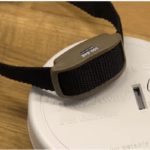Are you considering using a shock collar to train your furry friend but have concerns about its potential impact on their well-being? The use of shock collars on dogs has been a hotly debated topic, surrounded by misconceptions and differing opinions. This comprehensive article aims to shed light on shock collars uses and provide an informed perspective on the question: Do shock collars hurt dogs?
We also recommend you to watch the bellow video to fully understand shock collar a to z.
What is Dog Shock Collars ?
Before diving into shock collars’ potential effects on dogs, let’s take a moment to understand how these devices work. Shock collars, also known as electronic collars or e-collars, are training tools that stimulate the dog’s neck when triggered by the trainer.
The intensity of the stimulation can be adjusted, allowing for a range of sensations from mild vibrations to stronger shocks. While some trainers argue that shock collars can effectively modify a dog’s behavior, concerns have been raised about their impact on canine welfare.
1. Potential for Physical Pain
One of the critics’ main concerns is whether shock collars cause physical pain to dogs. It’s important to note that modern shock collars are designed with adjustable intensity levels to suit different dogs and training needs. When used responsibly and correctly, the low-level stimulations are often described as more startling than painful, serving as a momentary distraction rather than causing lasting harm.
It is crucial for trainers to follow ethical guidelines and never resort to excessive force or intensity.
2. Psychological and Emotional Distress
Opponents of shock collars argue that these devices may cause psychological and emotional distress to dogs, potentially leading to fear, anxiety, or even aggression. While it is true that any training tool has the potential to elicit stress in dogs if misused or abused, it’s essential to differentiate between responsible usage and negligence.
When shock collars are introduced gradually, paired with positive reinforcement techniques, and used under the guidance of experienced trainers, the likelihood of psychological distress can be minimized.
3. Alternatives to Shock Collars
Critics often advocate positive reinforcement training methods as a more humane alternative to shock collars. Positive reinforcement focuses on rewarding desired behaviors and creating a positive association between the behavior and the reward.
Treats, praise, and playtime can be powerful motivators in shaping a dog’s behavior without using aversive tools. However, it’s worth noting that different dogs may respond differently to training methods, and a balanced approach that combines positive reinforcement with appropriate aversive techniques may be necessary in certain situations.
The Importance of Responsible Use of Shock Collars
When considering the use of shock collars or any training tool, the well-being and safety of our canine companions should be our top priority. The responsible use of shock collars involves several key factors
1. Proper Training and Education
Trainers and dog owners must undergo proper training and education to understand the correct usage, timing, and intensity of shock collar stimulation. Being well-versed in canine behavior, body language, and learning theories will ensure practical and ethical training.
2. Gradual Introduction and Desensitization
Introducing a shock collar should be a gradual process, allowing the dog to acclimate to the new sensation in a controlled and positive manner. Desensitization techniques, such as associating the collar with pleasant experiences and gradually increasing stimulation levels, can help reduce potential stress or discomfort.
3. Individualization and Customization
Each dog is unique, and training methods should be tailored to their specific needs and temperament. The intensity level of the shock collar should be adjusted to suit the dog’s sensitivity, ensuring that the stimulation remains within a range that is non-harmful and effective for that particular dog.
4. Positive Reinforcement and Reward-Based Training
While shock collars may be used as a corrective tool, it’s vital to balance their use with positive reinforcement and reward-based training techniques. Consistently rewarding desired behaviors and providing ample praise and treats will help foster a strong bond between the trainer and the dog, promoting a positive training experience.
Final Thought
In the ongoing debate surrounding shock collars, it is crucial to consider all perspectives and prioritize the welfare of our canine companions. While shock collars have the potential for misuse and harm, they can be a tool for practical training when used responsibly and in conjunction with positive reinforcement techniques.
Our collective responsibility as dog owners, trainers, and advocates is to prioritize humane and ethical training methods, always striving to deepen our understanding of canine behavior and promoting positive relationships based on trust, respect, and compassion.
Related Posts
-
Are Shock Collars Bad for Dogs ?
This comprehensive article delves into shock collars, examining how they work, their usage, and their…
-
How Tight Should A Dogs Collar Be?
How tight should a dogs collar be? As a dog owner, you want to ensure…
-
9 Best Shock Collar for Small Dogs - Collars Reviews & Buying Guide
This article will give you a comprehensive guide to choose the best shock collar for…



